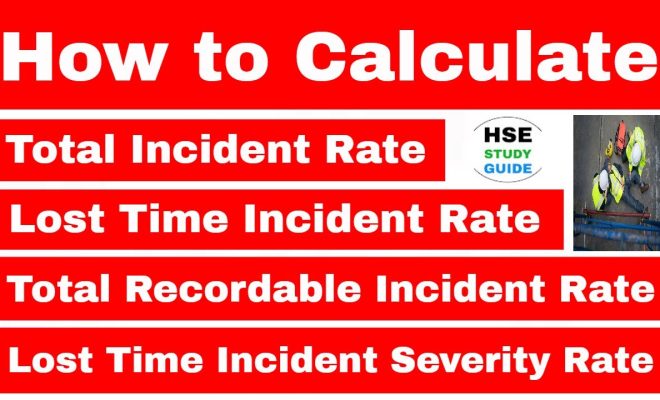How to calculate trir

Introduction
Total Recordable Incident Rate (TRIR) is an essential metric for evaluating an organization’s safety performance. It measures the number of recordable occupational injuries and illnesses per 100 full-time workers. This benchmark is crucial for identifying potential hazards and implementing corrective measures to ensure a safe working environment.
In this article, we will walk you through the steps to calculate TRIR, its importance, and how organizations can use it to improve workplace safety.
Steps to Calculate TRIR
Calculating the TRIR requires three pieces of information: the number of recordable incidents, total hours worked, and a constant value of 200,000—the equivalent of 100 full-time employees working 2,000 hours annually.
Follow these three steps to calculate your organization’s TRIR:
Step 1: Determine the number of recordable incidents
Recordable incidents refer to work-related injuries or illnesses that may require medical treatment, restrictions on normal job duties, or days away from work. Using your organization’s safety records, count the total number of recordable incidents within a given period (typically one year).
Step 2: Calculate total hours worked
Add up the total work hours for all employees during the same period in which you measured recordable incidents. Be sure to include overtime and exclude any time missed due to vacation or personal leave.
Step 3: Apply the TRIR formula
Now that you have both necessary values, apply the following formula:
TRIR = (Number of Recordable Incidents x 200,000) / Total Hours Worked
For example, if your organization had ten recordable incidents and 500,000 total hours worked during the year:
TRIR = (10 x 200,000) / 500,000
TRIR = 4.0
Interpreting Your TRIR
A lower TRIR indicates a safer working environment, while a higher rate suggests that your organization may be experiencing more accidents than average. To assess your TRIR’s effectiveness, compare it with industry benchmarks or track it over time to see if your safety efforts result in continuous improvement.
Improving Workplace Safety with TRIR
TRIR serves as an invaluable tool for organizations looking to optimize workplace safety. By continuously monitoring and calculating TRIR, you can:
1. Identify areas of concern and prioritize safety improvements
2. Set targets for improving workplace safety and track progress
3. Evaluate the effectiveness of existing safety programs and initiatives
4. Enhanced employee morale and engagement in safety matters
Conclusion
Calculating TRIR is essential for organizations to evaluate their overall safety performance and create a safer work environment for employees. With proper monitoring, analyzing, and implementing corrective measures based on TRIR data, you can improve workplace safety while reducing the number of work-related injuries and illnesses.






